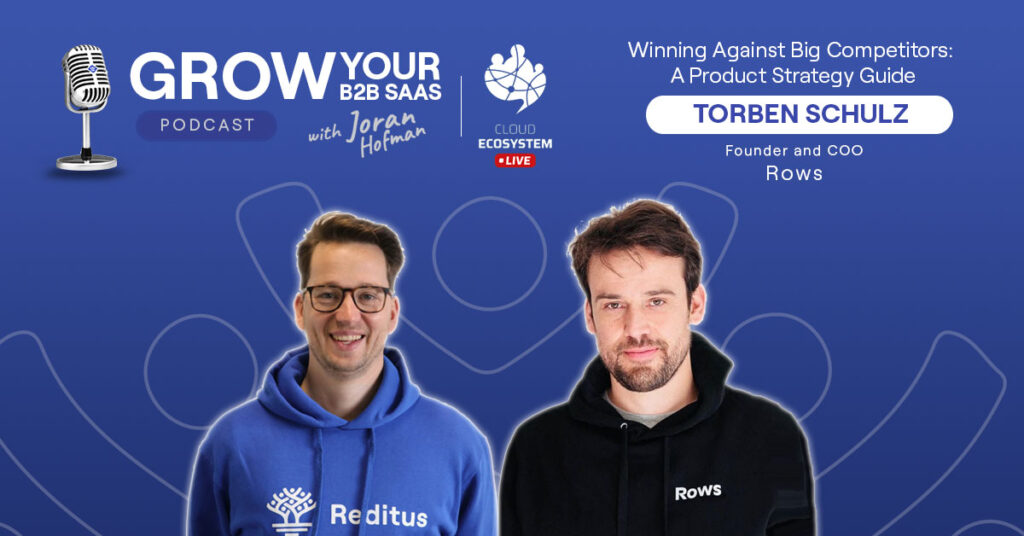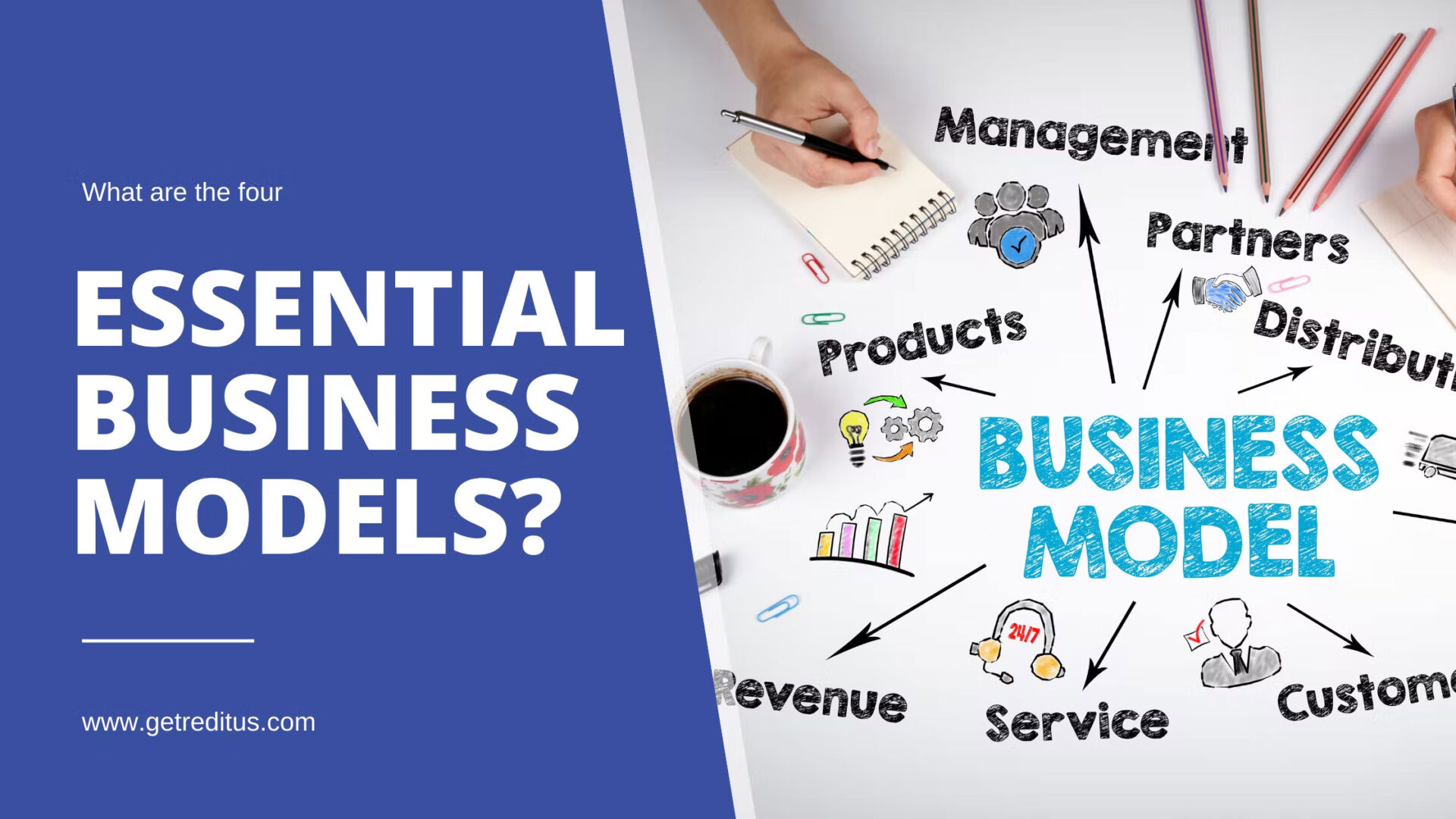S1E18 – Winning Against Big Competitors: A Product Strategy Guide with Torben Schulz

How can you Win Against Big Competitors? Imagine your product competing against one of the biggest and already established Brands like Excel. What product strategy should you implement to measure up to the biggest market competition? A clear product strategy is crucial in today’s increasingly competitive business environment. Accordingly, this is our topic of discussion in today’s special live-on-stage episode. Our guest expert, Torben Schulz is the co-founder and CEO of spreadsheet creator Rows.
Why you should listen to Torben: With a management and consulting professional background, Torben is the founder of Rows, which seeks to become the best spreadsheets in the world. With household competition like Excel and Google Sheets, Rows’ product strategy is geared towards giving users a more straightforward interface and data connectivity. In summary, Torben says the remarkable of his company are the reason any SaaS founder should give him a listening ear.
Why a SaaS needs a clear product strategy: Torben argues that a clear product strategy gives direction to the SaaS and its people. With a clear product strategy in place, the designers and engineers in the organization have the necessary freedom and creativity to work on specific tasks.
What is an ideal product strategy: The main building block of a clear product strategy, according to Torben, is a clear vision statement. The vision spells out the ideal customer profile and the problem that the product offers a solution to at present and in the future. In addition, it should articulate the jobs to be done in order to give direction to the people tasked with implementing the strategy.
Importance of integrations in a product strategy: Torben indicates that integrations are key elements of Rows because they offer tangible value to the users. According to customer feedback, integrations is one of the main reason users prefer Rows over similar tools by competition. Although integrations are a major value driver, Rows adopts a freemium model, only charging for them upon upgrade after 10,000 executions in a single month. Our guest expert also addresses the element of churn regarding integrations, stating there is a low probability of churn when various spreadsheets and integrations are used. Free-trial integrations often have low retention because they are easy to use and do not need third-party intervention. On the other hand, integrations dealing with such complex workflows as Bigquery and Facebook, for instance, have lower churn rates because they require professional assistance with the tools.
Challenges with using multiple integrations: Torben explains that maintaining integrations is a lot of work. Given the occasional changes in the APIs of partners, such as in Twitter and Facebook, it requires constant updating and upgrades in the integrations. However, Rows has gradually mastered the art of integrations, such as solving emerging user issues on the fly.
Role of a customer in product strategy: Our guest expert underscores the Importance of involving customers in the decision-making relating to product strategy. Feedback around the value obtained and expectations go a long way in informing where improvements need to happen. However, he observes that often there is friction between the vision and the user experience. To avoid this, Torben advises that a company should seek to satisfy its ideal customer profile by attending to its requirements.
Importance of Artificial Intelligence for SaaS: Our guest expert describes AI as a great growth opportunity area for software companies. For instance, Rows leveraged AI to pioneer Open AI integration in spreadsheets that helps in sensitivity analysis, categorization, lead scoring, and data cleanup. Also, AI would transform the way users get insight from their data and transform data into charts and data visualization. He argues that SaaS companies that leverage AI in the best practices can become industry leaders for change and reset user experience to gain greater market share. However, Torben observes that AI such as ChatGPT requires precise prompts because they are often unreliable with general directives.
Other benefits of integrations to Rows: Torben says that integrations have benefitted core usage of Rows in terms of increased signups and low churn rates. As they further integrate the capability, integrations promise to benefit the company in acquisition, activation, and retention.
Common mistakes for companies with their product strategy: Our guest expert notes the lack of greater ambition in some companies when undertaking product strategy. Given that realizing the product strategy often takes a long time, some companies lose the scope and lower the original high bars. Also, he decries the tendency of product managers to be resistant to afford the product development room for freedom and creativity.
Advice to SaaS companies with 10k MRR: Torben recommends a clear product vision and many experiments to achieve product-market fit. He further encourages startup founders to be flexible to changing the details of their product strategy.
Advice to SaaS companies with 1M ARR: Torben advises that the company should have clear, simple processes for its team. It is necessary to have in place able leadership within departments to lead with the product development and product strategy efforts.
Time Stamps
- (0:39) Topic and guest expert introduction
- (01:38) Why you should listen to Torben
- (03:43) Why a SaaS needs a clear product strategy
- (04:46) What is an ideal product strategy
- (05:45) Importance of integrations in a product
- (08:23) Challenges with using multiple integrations
- (11:18) Role of a customer in product strategy
- (14:50) Importance of Artificial intelligence for SaaS
- (16:57) Other benefits of integrations to Rows
- (19:08) Common mistakes for companies with their product strategy
- (21:27) Advice to SaaS companies with 10k MRR
- (23:14) Advice to SaaS companies with 1M ARR

